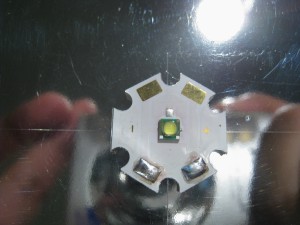
 |
|
|
|
#1
|
|||||
|
|||||
|
just looking at some of the solder in the pictures they do look cold. did you pre tin all the pads? you want to pre tin the pads and the wires then solder them togeather that way will give you a much sounder conection.
also with the meanwells you want to adjust the max curent down to 1000mA befor you hook it up to your aray to prevent over current. Steve
__________________
 *everything said above is just my opinion, and may or may not reflect the views of this BBS, its Operators, and its Members. If cornered on any “opinion” I post I will totally deny having ever said this in a Court of Law…Unless I am the right one* *everything said above is just my opinion, and may or may not reflect the views of this BBS, its Operators, and its Members. If cornered on any “opinion” I post I will totally deny having ever said this in a Court of Law…Unless I am the right one*Some strive to be perfect.... I just strive. |
|
#2
|
||||
|
||||
|
Interested to see if you get this working because I ended up giving up on mine after I couldn't get it working. I had major problems with soldering and wiring. Apparently you need flux core solder... I didnt know that and not really sure if I have it or not still haha.
Good luck! p.s. you can get thermal glue at Rona! |
|
#3
|
|||||
|
|||||
|
Thanks for all the pointers guys! I was using rosin core solder and did pre-tin all of the terminals on the LED pcb's but I didn't pre-tin the tips of the wire. I'm going out to pick up a better soldering iron and some thinner wire here tonight so I'll let you know how i make out.
I've done a few small soldering jobs in the past (LED moonlights) and have never had any issues but I guess there is a first for everything...
__________________
Do or do not....there is no try. |
|
#4
|
|||||
|
|||||
|
like most said keep you screws and soldering job is clean no loose wires or solder touching the star. And it is better for agonizing drilling and tapping into the heat-sink for if any problem arises later with individual led.
check some of the work i done on my arrays.  here is another  Last edited by eli@fijireefrock.com; 04-05-2011 at 12:33 AM. |
|
#5
|
||||
|
||||
|
Well my prayers have been answered. This might help you too:
http://www.rapidled.com/servlet/the-...or-CREE/Detail |
|
#6
|
|||||
|
|||||
|
I agree with the others, the soldering connections seem to be the problem. You need to tin the pads of the LED, tin the wire, then solder them together.
 Helps a LOT if you have a high wattage soldering iron. You want to heat up the target, not the solder wire. Then touch the solder wire to the target, and let the solder melt onto it. Careful of the flux (the clear stuff that comes out of the solder wire). If the flux is coating the pad or the wire, then that could be preventing a conductive connection. Don't be afraid to give the wire a good yank after you've soldered it. It should be ROCK SOLID. If it comes off, then obviously the connection was poor.
__________________
Gary Tank was up for 7yrs and 10months. Thanks Everyone! 2016/2017 180Gallon Build Coming Soon... |
|
#7
|
|||||
|
|||||
|
If you enjoy soldering and builiding your own arrays with heatsinks, wiring, screw tapping, mounting, fine, but if not, more and more options are appearing on the market that are plug & play without breaking the bank. A net search using "High Power LED E27 base" will yield a multitude of info on LED options with conventional screw in type bases. Some of them will work straight off your household AC while others work with a 12VDC supply. Personally I like the MR16 two pin 12VDC form factor. You could arrange a bunch of these with little effort since they push in to the MR16 base very easily and it's not as large a connector as the conventional household E27 screw in base. I can see this being somewhat more water resistant as well, with a small rubber gasket over the base which you would then push the lamp pins through. You could also run them directly from a 12VDC source like a deep cycle battery, provided you have a reliable way of keeping the battery charge at the required level to run the number of lamps you plan to use. No drivers converting AC to DC to run your LEDs, which are after all DC devices. You could also add a potentiometer to dim the LEDs directly in line with the voltage source. The electronics geeks could make this dimming feature automatic, I'm sure. Below are just a few links showing what's available these days. A little more patience, these things will start dropping in price as LEDs slowly start replacing the CFLs which replaced the incandescents in our homes. If/when one of these burns out, yank it & replace it, simple.
If you're still keen on assembling the parts required to DYI a soldered array, knock yourselves out, but I'm waiting a little longer and will build either an E27 or MR16 based lighting system when the price & availability of this form factor drops in price a little more. http://www.ledlightbulb.net/store/in...dex&cPath=4_31 http://www.dhgate.com/15w-high-power...b9aa25384.html http://www.ledlightsworld.com/mr16-1...ight-p-99.html I know this doesn't help solve the problems with your current LED job, but so many folks are getting caught up in this DIY LED array craze when there are easier options on the horizon.
__________________
Mike 77g sumpless SW DIY 10 watt multi-chip LED build Last edited by mike31154; 04-06-2011 at 06:45 PM. |